
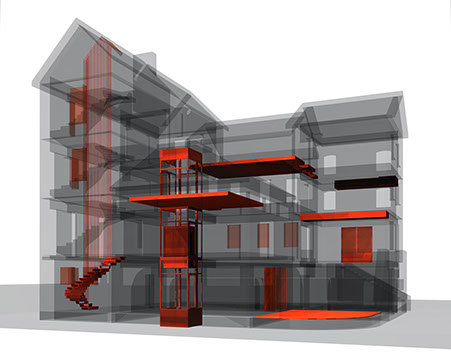
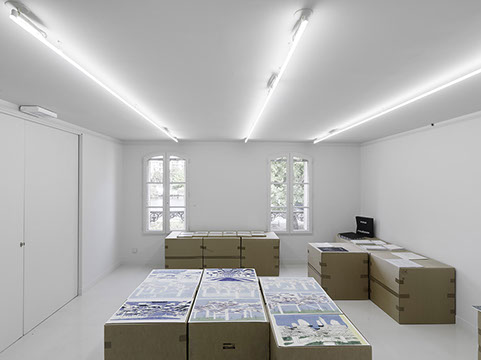
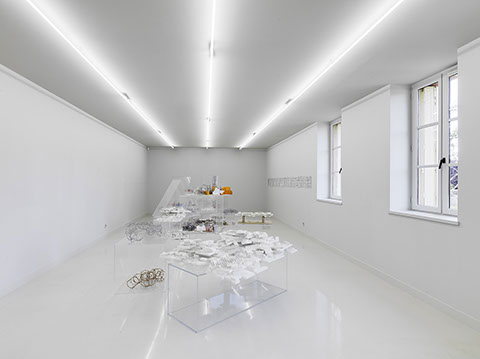

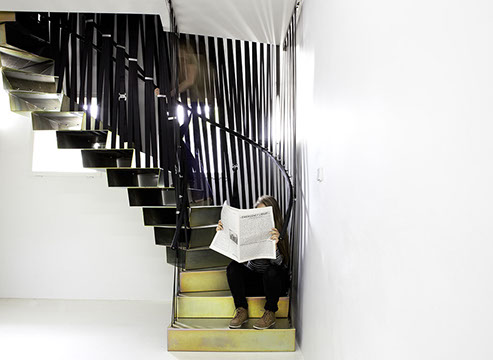



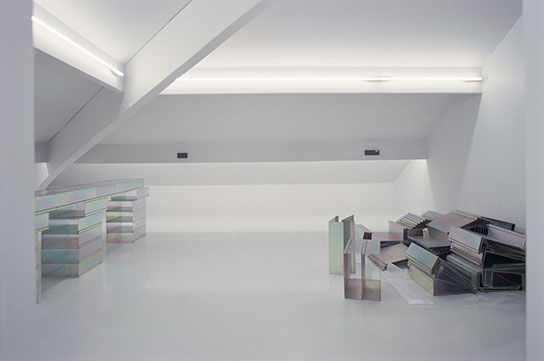

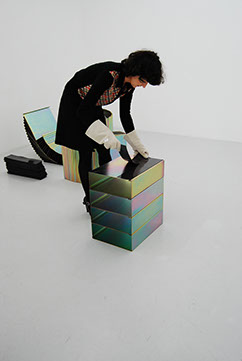
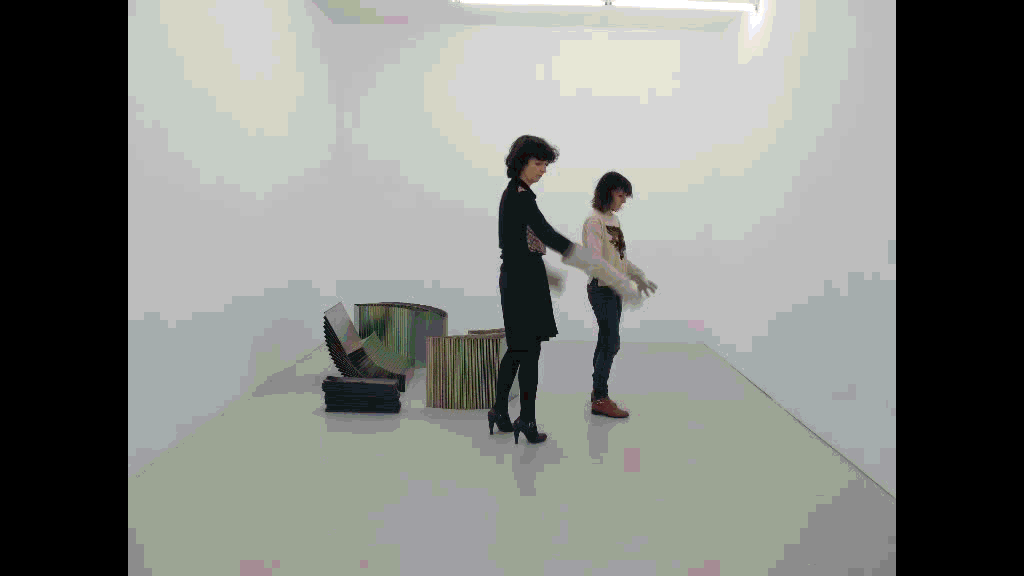
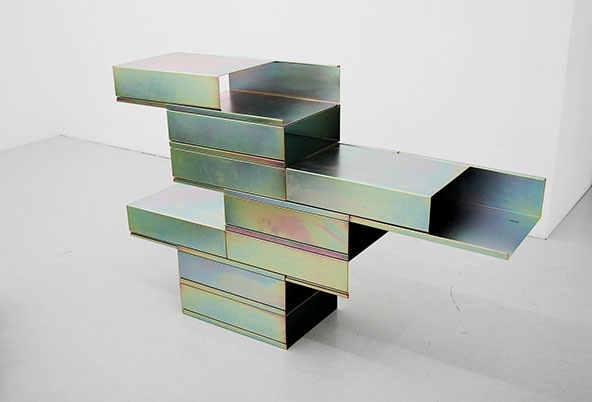

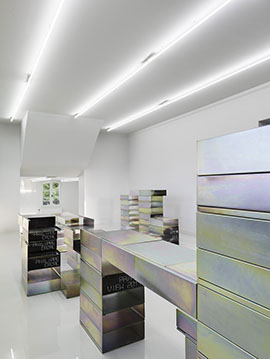


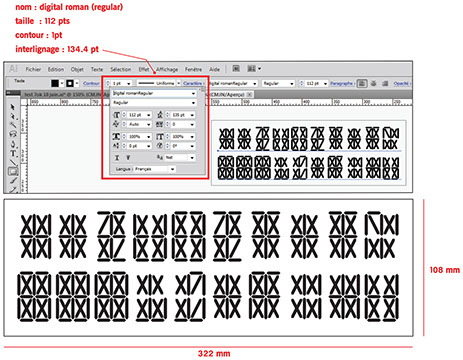
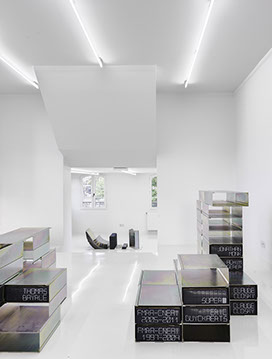
© Florian Kleinefenn
© Charlotte Cantin
© Florian Kleinefenn
© Florian Kleinefenn
© Florian Kleinefenn
© Charlotte Cantin
© Florian Kleinefenn
© Florian Kleinefenn
© Louis Bona
Performance par Elisabeth Lemercier et Céline Hervé
réalisation du film par Joseph Bona
© Florian Kleinefenn
© Florian Kleinefenn
1 / 20
145_cneai
2012
maîtrise d’ouvrage : Centre National Edition Art et Images
maîtrise d’oeuvre : Bona-Lemercier Architectes, Christophe Jacquet, artiste graphiste
financements publics: Région Ile de France, Direction Régionale des Aires Culturelles, Conseil Général des Yvelines, la Ville de Chatou
réhabilitation et aménagement de la Maison Levanneur en centre d’art CNEAI
Sans modification profonde du bâti et en assumant l’adjonction successive des espaces, l’occasion a été donnée de considérer le bâtiment comme un tout. La réponse à la multiplicité des contraintes et d’usages du lieu, se veut unitaire et légère dans les procédés et matériaux employés, afi n de caractériser l’ensemble sans supplanter les objets présentés.
Le blanc-gris RAL 9002, appliqué indiéremment aux sols, murs et plafonds, favorise la neutralisation du bâti. Les contours du centre sont eff acés, dans une volonté de valorisation du contenu, et donc des oeuvres et des objets. Le blanc, conventionnellement utilisé à cette fin, est remplacé par ce blanc-gris RAL 9002, plus adapté à l’architecture traditionnelle de la maison Levanneur et propice au détachement des éditions majoritairement imprimées sur support papier blanc. Tout élément rapporté se veut identifi able en tant que tel et autonome au sein du bâti existant pour ne pas en accuser la lourdeur.
obu (original bipolar units)
système modulaire d’agencement pour le stockage, la classification et l’exposition
matériaux : acier bichromaté - caoutchouc multipolaire
dimensions : L348 x H132 x P480 mm
épaisseur de l’acier : 15/10 éme et 20/10éme
fabriqué en France
© Bona-Lemercier architectes, 2011
Conçus dans le cadre de la rénovation du CNEAI (centre national de l’édition et de l’art imprimé), ces étuis sont destinés à protéger la collection FMRA. À la fois modules de rangements et de construction, Ils sont de réels outils de scénographie à disposition du cneai, mais aussi des artistes en résidence au centre. Ils s’assemblent par force magnétique, ce qui ore des possibilités de porte-à-faux et de structure. En se dédoublant, ils permettent de déployer les objets, d’exposer les oeuvres et de présenter la matière artistique papier sous une nouvelle forme. Facilement compactables et sans contraintes dimensionnelles, le système se prête au expositions itinérantes et au déménagement.
refurbishment of the Maison Levanneur as an exhibition space and museum CNEAI
Without making major changes to the building’s structure and taking into account the various extensions and additions to it over the years, this project provided an opportunity to treat the building as a whole entity. The response to the place’s many constraints and varied uses needed to be unitary and light in both processes and materials in order to characterise the whole without interfering with the items on display.
Grey-white RAL 9002, applied universally to floors, walls and ceilings, has promoted the space’s neutral impact. The centre’s contours are effaced, allowing its content to take centre stage, with emphasis moving to the works and the objects. White is conventionally used to achieve this effect, but has here been replaced by the grey-white RAL 9002
which is more suited to the conventional architecture of the Maison Levanneur and for displaying the works, most printed on white paper. All added elements should be identifiable in themselves and autonomous within the existing building, alleviating its awkwardness.
obu (original bipolar units)
modular system of fittings for storage, classification and exhibition
material : steel - rubber
dimensions : L348 x H132 x P480 mm
steel thickness : 15/10th et 20/10th
made in France
© Bona-Lemercier architectes, 2011
Designed as part of the renovation of the CNEAI (national centre for publishing and printed art), these cases are intended to hold the FMRA collection. Modular units for both storage and construction, they play a full part in cneai exhibition design and can be used by artists in residence at the centre. They are held together magnetically, increasing options for cantilevered layouts and varied structures. In split form they can be used to show objects, exhibit works and present artworks on paper in a new way. Easily packed down and with no dimensional constraints, the system is perfect for traveling exhibitions and when moving sites.